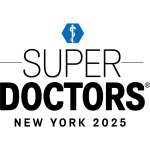

Laser skin tightening is a nonsurgical, minimally non-invasive cosmetic procedure. It may help reduce signs of aging on the skin. As skin ages, it tends to lose its elasticity and become less tight.
The body areas people most often target using laser skin tightening procedures include the:
Skin aging is a natural process that occurs as people age. However, it could be accelerated by such factors as sunlight, stress, and chemicals. Skin aging is affected by numerous genetic and environmental factors that can appear as wrinkles, abnormal pigmentation, skin weakness, and telangiectasia.
Different types of lasers for skin rejuvenation are ablative lasers, non-ablative lasers, and fractional lasers
These kinds of lasers have been used to treat scars, pigmentations, and rhytides by removing the epidermis and heating dermis. However, ablative lasers reduce time of treatment and cause a more difficult recovery process, these lasers create the most dramatic impressive results. For severe facial wrinkles, pigmentation, and skin challenges, ablative lasers are often the preferred treatment. The most common ablative lasers used for skin rejuvenation is the Nd:YAG.
Non-ablative laser resurfacing demonstrates one of the main developments in procedural dermatology over the past decade and has become the treatment of selection for a broad range of aesthetic indications. However, safety concerns related to their use in darker skin types have remained. These lasers are less destructive than ablative lasers and tighten the skin by naturally stimulating collagen production in the dermis; the epidermis is protected through skin cooling. This type of laser is less aggressive than the Ablative laser options.
The Fraxel® DUAL Laser system has the unique advantage of two treatment modes/wave lengths in one laser. This non-surgical laser procedure smooths wrinkles and scars, improves texture , tone, elasticity, color and also minimizes pore size. The Fraxel® DUAL Laser uses patented fractional technology to target sun damaged skin. The laser treats only a fraction of tissue at a time, leaving the surrounding tissue untouched, which promotes rapid healing. This stimulates your body's own natural healing process and stimulates collagen growth & replaces the old and damaged cells with fresh, glowing, healthy skin. The result is more youthful, radiant skin with minimal down time. Any area of the body can be treated: face, chest, neck and hands.
Fraxel DUAL Laser Modes/Wave Lengths:
Laser skin tightening is performed in the office. You will wear safety eyewear to protect your eyes. Each laser pulse may be preceded and followed by a short puff of cooling spray. A treatment can take as little as a few minutes to as long as an hour, depending on the area and condition being treated.
Patients will have a topical numbing cream applied approximately 30 minutes before their treatment. Some patients may feel a slight discomfort with each laser pulse, sometimes described as the snapping of a rubber band on the skin. Should this discomfort occur, it resolves in several seconds.
Usually 3 to 5 treatments at monthly intervals.
If you have a history of cold sores, prophylactic treatment with antiviral therapy (Valtrex, Famvir, or Acyclovir pills) may be started before your laser treatment. The intended treatment area should not be exposed to sunlight or tanning booth light for 14 days prior to treatment.
Your face will feel hot, applying cool compresses will provide comfort. Any redness or swelling should resolve within a few days. During the healing process your skin will originally appear "sunburned" and have a sandpaper feel and then peel 4-7 days after your treatment. By day 7 you will begin to reveal a softer, brighter and improved skin tone. Treating yourself to a HydraFacial MD one- two weeks post Fraxel will help expedite the shedding of old skin and infuse intense hydration. Other benefits of Fraxel laser treatment include: reducing the appearance of acne scaring, treatment of actinic keratosis, reduction of fine lines and wrinkles, smoother, fresher, younger looking skin, improved tone and texture, erase unwanted brown spots, age spots & melasma.
After laser treatment, prevent sun exposure and apply sunblock (SPF 30 or greater). Apply generous amounts of moisturizer often to keep skin hydrated. Avoid scrubs or abrasive skin cleansers the first few days after your treatment.
Your risks are minimal. Side effects may include redness, swelling, hyperpigmentation, hypopigmentation, blistering and a bruise in the treated area--if they do occur, it does not usually last more than a week. Permanent side effects are rare.
Schedule an office visit to discuss your concerns and skincare goals with Dr. Robinson and the office visit cost will be applied to the future cost for the "consulted procedure". The "consulted procedure" must be completed within 30 days of your consult visit.

